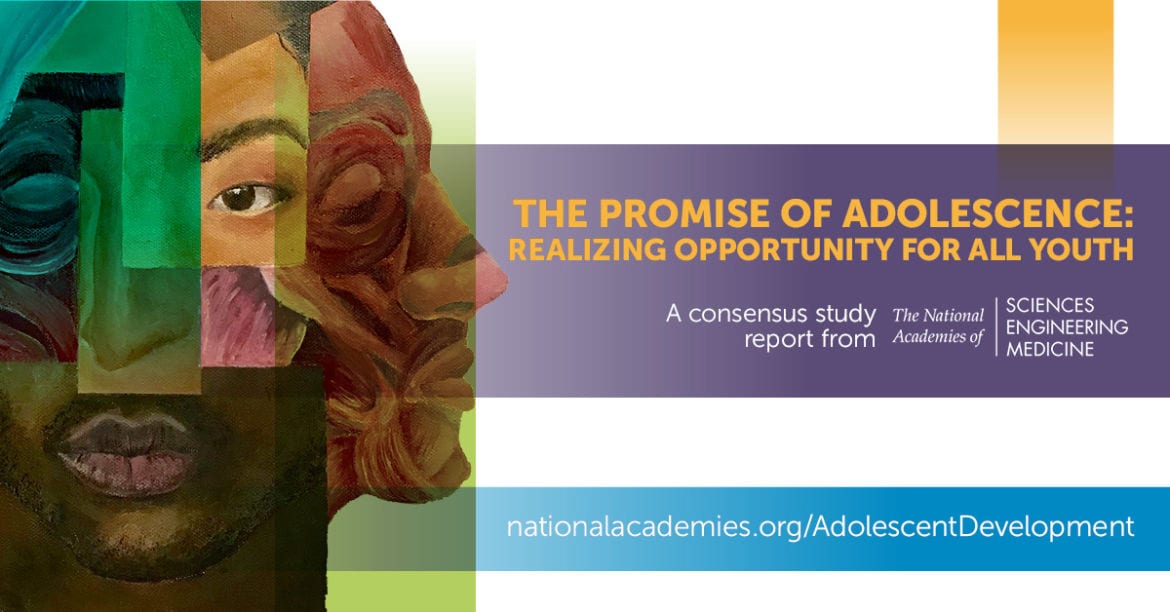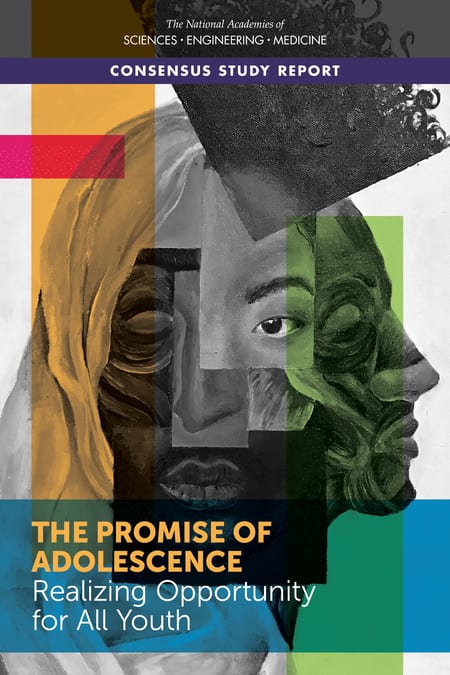
The Promise of Adolescence
Realizing Opportunity for All Youth
Over the past several decades, research has fundamentally changed our understanding of how adolescents—young people ages 10 to 25—develop, grow, and learn. Changes in brain structure and function (such as the strengthening of connections within and between brain regions and the pruning away of unused connections) that occur during adolescence affords young people a remarkable capacity to learn, adapt to changes, and explore their own creativity. Adolescent brains are specially tailored to meet the needs of this stage of life, allowing them to explore new environments and build new relationships with the world and people around them.
But what does this new understanding mean for society? How can the kinds of settings and supports that allow adolescents to thrive and make meaningful contributions to the world around them be created?
A positive pathway into a thriving adulthood is not forged by adolescents alone. Instead, it requires alignment between the strengths of adolescents, like their increased independence, flexible problem solving skills, and openness to new experiences, with resources available in their environments, including access to stable housing and nutritious foods as well as positive social interactions and relationships with peers and adults.
There is an urgent need to reimagine and redesign the systems and settings that adolescents most frequently encounter, including the education, health, justice, and child welfare systems. By embracing a collective responsibility to build systems that account for the new knowledge it is more possible to ensure that millions of young people flourish and can impact society for the better.
